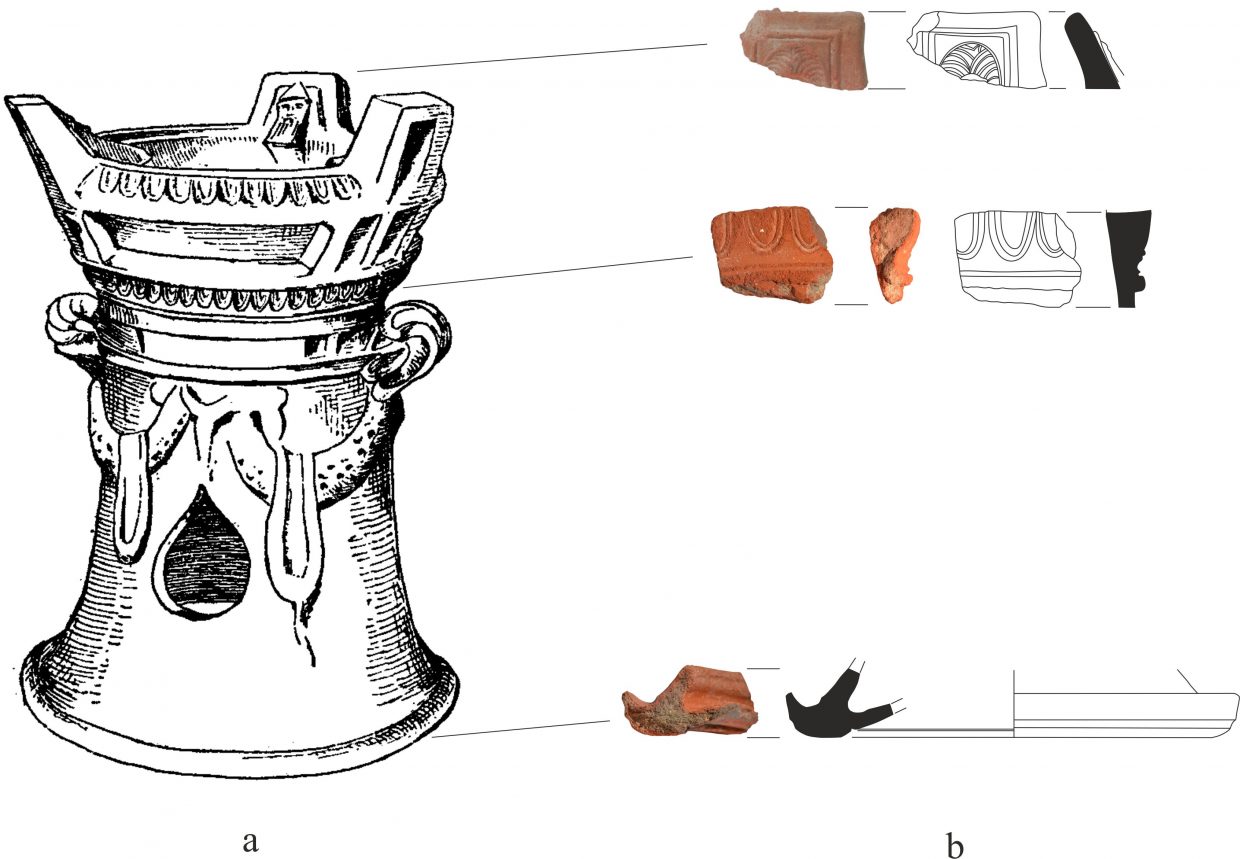Surely another way of cooking? What the Hellenistic Braziers from the Agora of Nea Paphos can tell us about ancient social behaviour
Portable braziers, frequently made of clay utensils and appearing in different shapes (Fig. 1:a), are associated with the process of cooking. They were popular across the Mediterranean from the Early Hellenistic to the Early Roman periods. In recent years, braziers have received much attention in terms of provenance, distribution, and the activities associated with then: this has enabled an understanding of not only some aspects of everyday behaviour but also a broader view of cultural codes characteristic of given communities. The hypothesis that braziers may have been used as kitchen utensils is strengthened not only by the material evidence but also by experimental archaeology, which has indicated that braziers, under specific environmental conditions, allowed for speedy food preparation.

The archaeological evidence from many sites in the Mediterranean region indicates that braziers were mostly supplied to coastal communities living in cities located on major sailing routes. This trend is also confirmed in Nea Paphos in Cyprus, which was located on the borders of strong economic and cultural networks.
The data provided by the fragments (Fig.1:b) from the Agora in Nea Paphos, Cyprus, indicate that distribution of portable braziers to the city articulates the choices and social needs of the city-community and was influenced by a number of different factors. The number of braziers, compared to other types of import, is small. It seems likely that their import was not a consequence of specific or sustained demand, but rather was derivative of regional economic interactions. Braziers are generally rare finds at all sites and only found in large numbers where vast quantities of other ceramics have been uncovered. This is probably owing to their relative rarity, durability and probably long use-life. The presented data in my article in ABSA 2022 demonstrates that braziers were imported from two main directions: from the places of production in Asia Minor and from Benghazi, located in Cyrenaica (modern Libya). Local production of these objects in Paphos is possible but is still unproven.
The context in which the Agora braziers were discovered does not directly indicate their use. Most of the analysed fragments were found in locations tentatively associated with a commercial and/or artisan function. The size of the attachments and the diameters of their bases suggests that most of the braziers found in the Agora appear to have been small in size. Their reduced proportions required a smaller amount of fuel to cook, though it would have required constant replenishment. This may have caused less efficient heating and a slower process of cooking. Even if their original use was ritual or domestic, it is possible that they were recycled for use in workshops.
Fig. 1. (a) The most popular were braziers with a cylindrical – usually decorated – high or low stand, pierced hemispherical bowl with three attachments (plain or mould-made, differentiated in their iconography by heads of bearded men wearing a pileus – conical hat, an onkos -tall, curly wig, or an ivy wreath) (drawing after Conze 1890); (b) fragments of braziers from the Agora in Nea Paphos (with the Permission of the Paphos Agora Project, Institute of Archaeology, Jagiellonian University in Kraków).
Cultural shift or short-lived fashion? Interpreting the role of Hellenistic braziers from the Agora of Nea Paphos, Cyprus by Kamila Nocoń is out now (open access) in the Annual of the British School at Athens.





